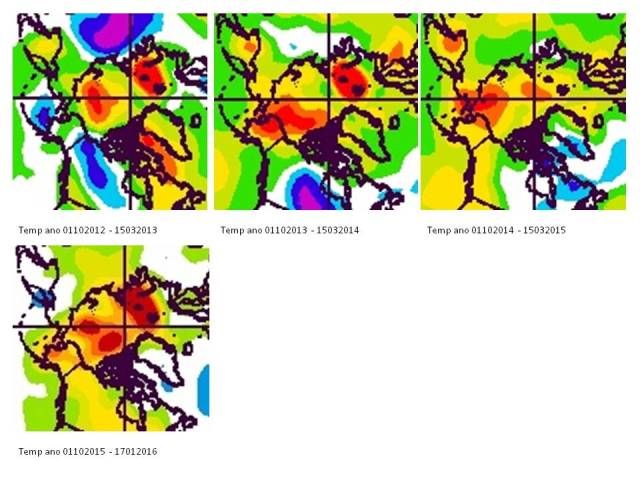Morning Gray-Wolf,
Your post reminded me of my work on ‘winterpower’. About two years ago I worked back through the NCEP/NCAR composites to see whether there’s a trend in winter warming. I couldn’t come up with much; most winters show warming last two decades but there was large interannual variance.
Nevertheless, when this winter up to now is compared to the past three seasons, it does look like circumstances won’t be good for the ice next summer:

Although the positive anomaly during 14-15 looks smallest, summer 15 produced some bad melting. That fact puts the importance of winter cold in perspective. A bad summer will probably trash the ice, whatever winter now precedes.
As heat released from the oceans is bound to influence this whole year and probably part of ’17, I still point to ’17 for the year that might produce another ‘black swan’- event. Like I wrote earlier last year, that event won’t immediately produce an icefree Arctic Ocean in September (<1Mkm2). It will result in a next melting plateau for some years.
I’d forecast around ’23 for the first ice-free September to occur. That stage will in my opinion trigger an irreversible course to a perennial-ice-free state of the Arctic some ten years later.
It seems hard to imagine when I consider the past trends. But as the climate system is by now in course of rapid transition, extrapolation from the past is not of much use anymore.
